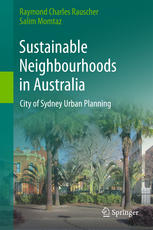

Most ebook files are in PDF format, so you can easily read them using various software such as Foxit Reader or directly on the Google Chrome browser.
Some ebook files are released by publishers in other formats such as .awz, .mobi, .epub, .fb2, etc. You may need to install specific software to read these formats on mobile/PC, such as Calibre.
Please read the tutorial at this link: https://ebookbell.com/faq
We offer FREE conversion to the popular formats you request; however, this may take some time. Therefore, right after payment, please email us, and we will try to provide the service as quickly as possible.
For some exceptional file formats or broken links (if any), please refrain from opening any disputes. Instead, email us first, and we will try to assist within a maximum of 6 hours.
EbookBell Team

4.8
44 reviewsThis book examines the planning and implementation of policies to create sustainable neighborhoods, using as a case study the City of Sydney. The authors ask whether many past planning and development practices were appropriate to the ways that communities then functioned, and what lessons we have learned. The aim is to illustrate the many variations within a city and from neighborhood to neighborhood regarding renewal (rehabilitation), redevelopment (replacement) and new development.
Case study examples of nine City of Sydney neighborhoods note the different histories of planning and development in each. Features of the studies include literature searches, field work (with photography), and analysis. The authors propose a set of sustainability principles which incorporate elements of the twenty seven principles of the 1992 Rio Declaration on Environment and Development
Part One explores sustainable urban planning, and the importance of planning tools that enable best planning outcomes for communities and investors. Common factors in the nine case study neighborhoods are renewal, redevelopment and development pressures affecting Sydney from the 1970s to 2014. Also discussed are the differing circumstances of planning faced by authorities, developers and communities in each of the study areas.
Part Two of the book is focused on the case study areas in City of Sydney East area: Woolloomooloo and Kings Cross. Part Three covers case study areas in Sydney's Inner South area: Chippendale, Redfern and Waterloo District. Part Four surveys the Inner West suburb of Erskineville. Part Five looks at the City West area, including the Haymarket District and the Pyrmont and Ultimo District. Part Six concentrates on the North West area suburb of Glebe. Part Seven of the book looks at the growth area of South Sydney District, which includes the suburbs of Beaconsfield, Zetland and the new localities of Victoria Park and Green Square. The authors recount lessons learned and outline directions of planning for sustainable neighborhoods. Finally, the authors challenge readers to apply the lessons of these case studies to further advances in sustainable urban planning.